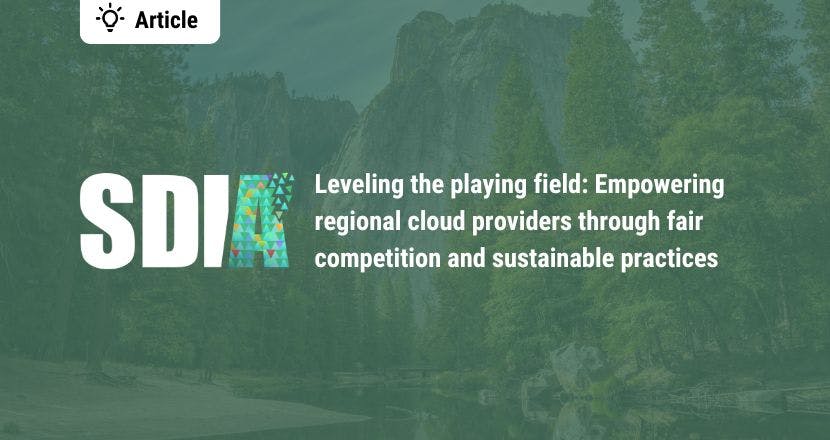A sustainable European cloud that can be open-source, fair, and create economic opportunities for all is possible – and it will soon become a reality. Such digital infrastructure will reflect European values, and provide a blueprint that others around the world can draw inspiration from to further develop their own digital economies. This is the third part in our three-part blog series exploring how to achieve this vision, which focuses on how to make a European cloud sustainable and who it will benefit. Read part one here, part two here, and a summary of all three on RIPE Labs here.
Our previous post introduced our blueprint for a sustainable, inclusive, and equitable European cloud. How should we go about realizing this vision, however? To begin, we cannot stress enough that building a cloud platform for Europe cannot be created in a top-down manner. It has to manifest in a bottom-up way from its individual regions and generate prosperity for local businesses. The digital transformation of businesses, governments, and society at large will require local ecosystems of knowledge and infrastructure.
What is needed to facilitate this vision, however, is a shared blueprint of how to enable local infrastructure and a path to interconnect these regions. We strongly believe that such a blueprint will consequently lead to an integrated European cloud platform that uplifts local economies and enables local digital transformation and innovation.
The blueprint is an opportunity to establish an infrastructure that is long-term oriented, with little-to-no environmental impact, with competitive pricing, and in balance with society. It is an opportunity to create a sustainable infrastructure for the digital age.
The blueprint is based on existing infrastructure and technology
As SDIA and its members and partners endeavor to develop this blueprint for regional cloud infrastructure, a key principle prevails: to build upon what is already there.
Across Europe lies sufficient data center facilities and sufficient real estate that can provide additional space. Some will need to be retrofitted to remove their environmental impact, but most can serve as the foundation. In other cases, existing real-estate can be utilized, integrating digital infrastructure with other development projects. Fiber-optic networks remain critical; since they are a choke point in many regions, governments need to invest in them and take action to close the gap between areas with robust and reliable fiber networks and those without.
Refurbishment and lifetime extension are the paramount principles of the blueprint for IT equipment and servers. Accepting that IT servers are commodities and that performance is more likely to be gained from virtualization and software-based scaling means that existing equipment can be used. It also requires a different pricing scheme, which takes into account the age and performance of the equipment. The main objective again is to reuse as much of what is already there.
Being able to connect regions together also requires a decision on the cloud platform technology that will be used across all regions. The software technology chosen for the blueprint must be open-source and license- and patent-free. The choice fell to Kubernetes, an open-source software technology that is already changing the way developers are building cloud-based applications today (for more information, check out this post on our blog explaining how it is the key to the second cloud revolution). By implementing Kubernetes in each region, ensuring the interoperability of the IT workloads and application becomes possible, and thus, the trading of infrastructure capacity as well.
A business model based on regional collaboration
The practical challenge of building a regional cloud is the one of upfront investment costs. Building a cloud platform from scratch requires large investments in facilities, IT equipment, fiber-optic networks, software development, and so on.

.jpg?ixlib=gatsbyFP&auto=compress%2Cformat&fit=max&rect=0%2C44%2C600%2C800&w=600&h=800)



